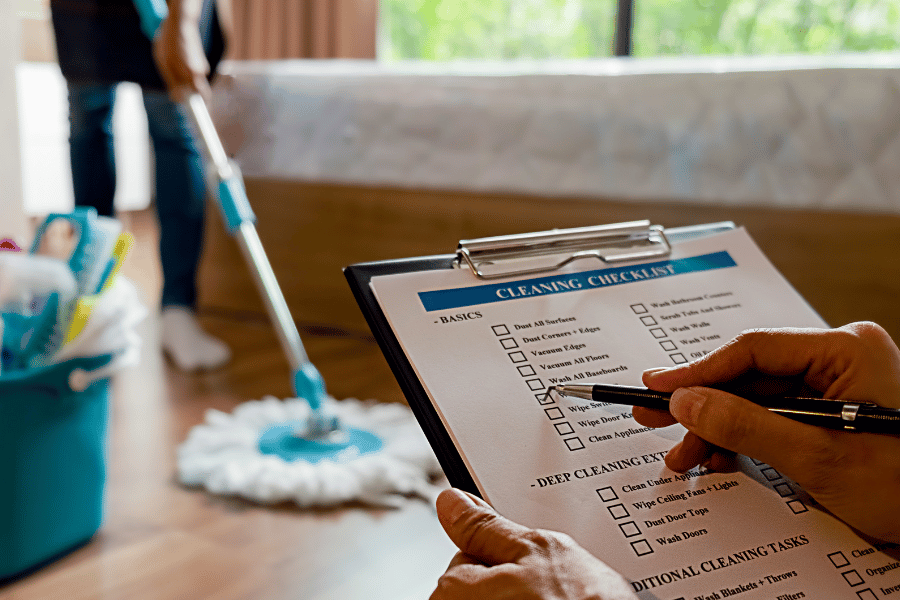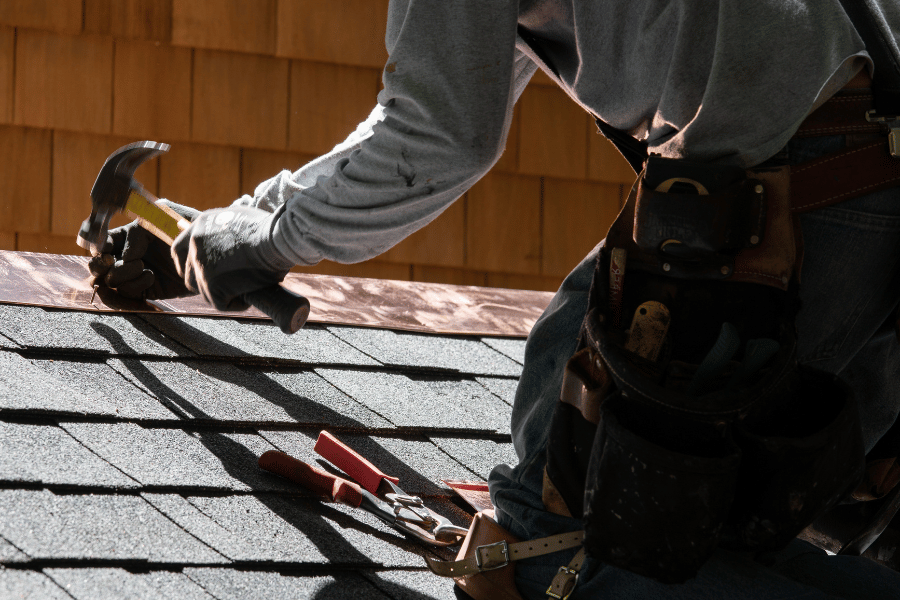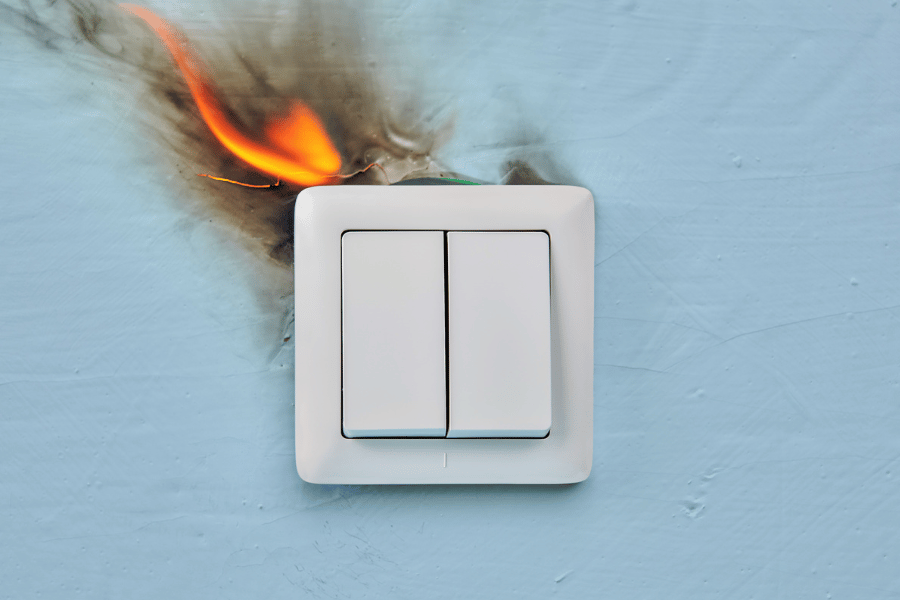Preparing Your Home For Impending Snow
December 18th, 2023
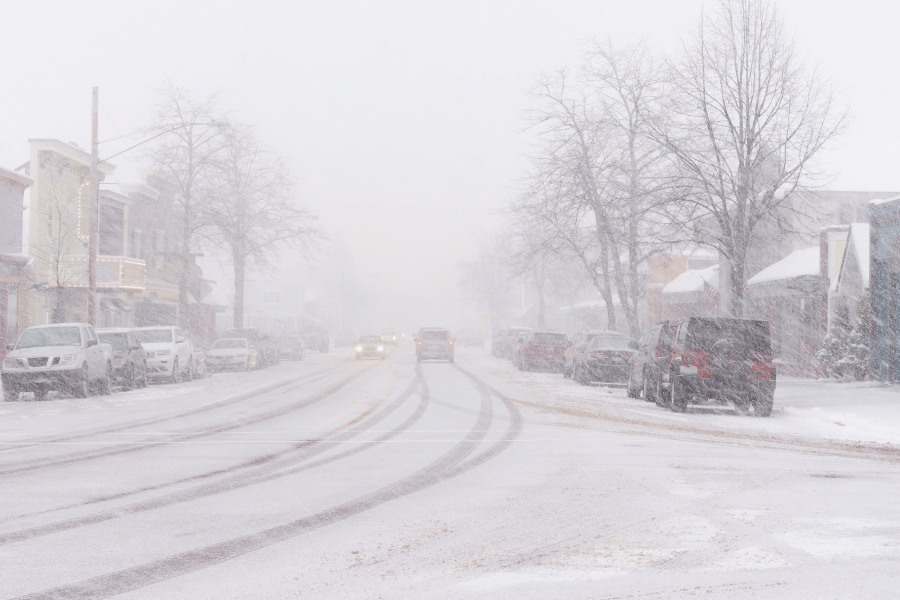
Preparing Your Home For Impending Snow
Is the area you are living in expecting some snow? Keep reading to learn about some ways to prepare your home for impending snow.
With the winter cold coming in, it is time to prepare your home for the cold weather and the possibility of snow. Preparing your home ahead of time can cut utility bills, protect investments, and increase the value of your home. You can do all of these ways yourself.
Winter storms can bring cold winds, downpours, sleet, ice, snow, and other things, and if your home is not prepared, then you could be in real trouble. Winterizing your home in Raleigh may seem like it could be a lot, but it is actually relatively easy and inexpensive to keep yourself warm and prepared for the cold months ahead.
Living in an area that is prone to snow and winter storms can offer great skiing opportunities, but it can also be challenging. Knowing how to prepare your home for the upcoming winter season is essential. If you are planning on buying or selling a house in an area with snow, it is essential to plan ahead and ensure that your new home is equipped with everything you will need to stay warm and safe during the winter months.
Here are ways to prepare your home for impending snow.
Chapters
1. Check Furnace
Getting your furnace serviced and investing in an annual service for your home's heating system will save you more money and stress in the long run. Ensuring your furnace is clean and in good repair will save you more money for your buck and help your home's safety.
Getting the furnace serviced before winter may also save you from being frozen cold in the winter months. If your furnace is not serviced before, it may accumulate dirt, dust, and many other things, making it run less effectively.
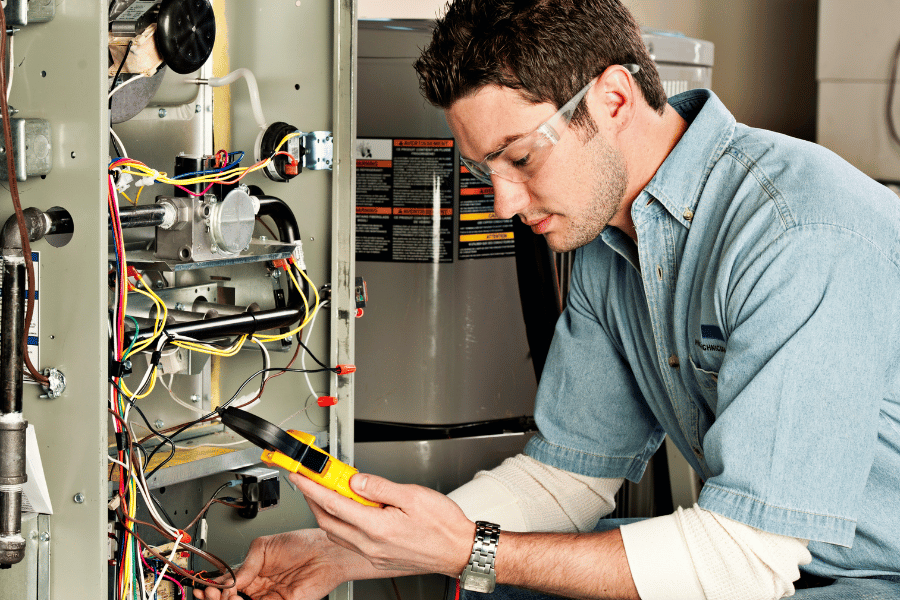
2. Reverse Ceiling Fans
While reversing the ceiling fan may not do anything for the impending snow, however, it will help keep your place warm. If your ceiling fan has a reverse switch, you should turn it clockwise after you turn on your heat. Doing so, the fan will produce an updraft and push down into the room-heated air from the ceiling.
Reversing your fan may help circulate the warm air in your rooms, especially if they are higher ceilings, as well as letting you turn down your thermostat by a couple of degrees for more energy savings. This all will help you when the temperatures are freezing outside, and you are trying to stay warm and not spend so much money on doing so.
3. Prevent Ice Dams
If you know your home develops a lot of icicles or ice dams, you will want to take some steps to prevent potential damage of meltwater from backing up and flowing into your home. Many weatherizations and auditors can install insulation in the home attic that leads to ice dams.
If you had work done before December 31st, 2023, you could claim the federal energy efficiency tax credit for 30% of the cost and claim the maximum annual credit every year that you make eligible improvements until 2033. However, the recognition and other expenses are limited, so just be aware.
Overall, ensure you do not let any meltwater damage your home inside or out, so just be prepared and take precautionary steps ahead of time.
4. Check Roof
Making sure you do a roof inspection is one of the most accessible preventive maintenance jobs before now. Look for damaged, loose, or missing shingles that may leak during the winter storm or any melting snow. Any little crack or worn rubber around the pipes could be an issue, so look closely.
If you live in the Southwest, the roofs there tend to be flat with surfaced asphalt and pebbles, so make sure you clean off the roof because any fallen leaves or needles may hold moisture and ruin the roof. However, replacing a roof may seem like something very inconvenient; however, if need be, you should hire a handyperson to repair any shingles that are in need. These can range from $100 to $600, depending on the size and section of the roof.
5. Prepare Your Tools For Winter
This may seem like an everyday thing. However, some people do not have winter tools. Winter work can also be hard on devices; fluids can freeze, metals shrink, and water can crack anything, so make sure you have tools and ensure the tools you have are in good shape and ready to use. Here are some ways to keep your devices in good condition when cold outside.
- Store cordless power tools in a heated shed or area
- Make sure to thoroughly clean any blades or parts of the equipment after each use
- Put a small layer of oil to prevent any rusting
- Warm up some tools in warm air before using them because they can be fragile in cold weather
- Lubricate parts of tools as the manufacturer may recommend.
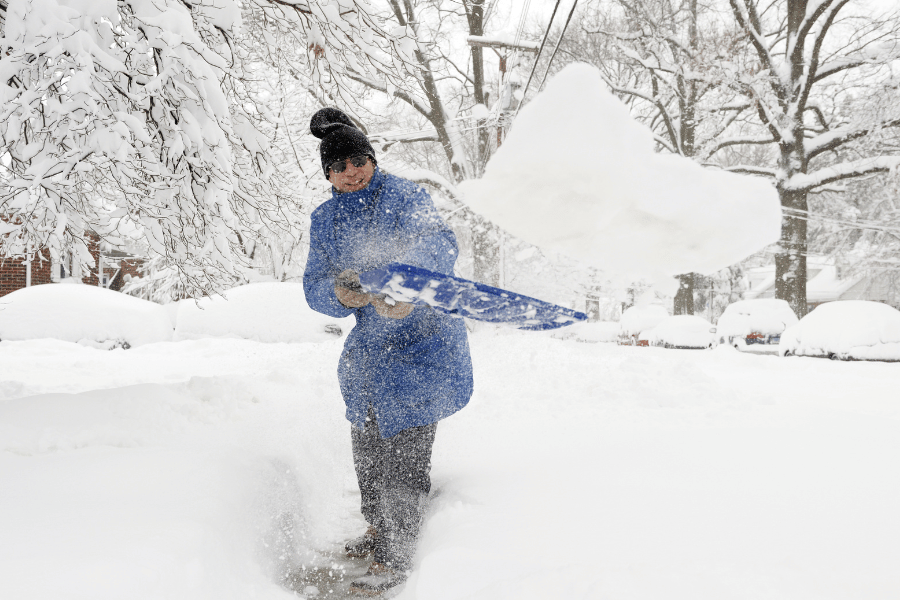
6. Turn Off Exterior Faucets
Faucet winterization is important so you do not bust any pipes. If your faucet is not protected, it will spoil or damage your house in many ways. If you do not drain the water, the pipes will also freeze and bust during the winter cold.
If you live in a cold climate area, you should consider installing a new freeze-proof faucet that automatically drains any water that enters when it is off to prevent any frozen build-up that could make the pipes bust.
Here are some steps to winterize the faucet outside to prevent any damage:
- Disconnect the hose, take off any attachments, and then drain the water that may be sitting in the faucet.
- Find the shutoff valves; these are usually inside your home on the wall to your outside faucet.
- Drain the faucet completely. You may need to let the water trickle out, and if water continues to come, you may need to tighten the shutoff valve.
- Insulate the facut
7. Caulk Windows and Doors
Caulking windows and doors can be one of the most important things to do to properly protect your home from any leaks or moisture from any winter storm. If you notice any breeze as well, that can affect your energy bills and be a sign that you need to fill any cracks through any windows or doors. You should recaulk about once every five to ten years on average.
Silicone caulk is considered to be the best exterior use because it will not shrink. If any gaps are more significant than the width of a nickel, you need to reapply caulk. You may also add any weather-required stripping around doors.
There are so many ways to make sure your home is sealed, and it is a very important step to do ahead of time to save your home as well as save money.
8. Bring In Outdoor Plants/Furniture
This may also seem like a common thing to do, but some people may forget. Before the freezing cold weather comes, make sure you take in any outdoor belongings and plants to prevent any damage and to keep plants alive in the cold temperatures.
Storing away any furniture, as well as yard equipment, is important because you do not want anything to get frozen, ruined, or rusted during the winter months just because you forgot to store them away or store them correctly.
9. Protect Pipes
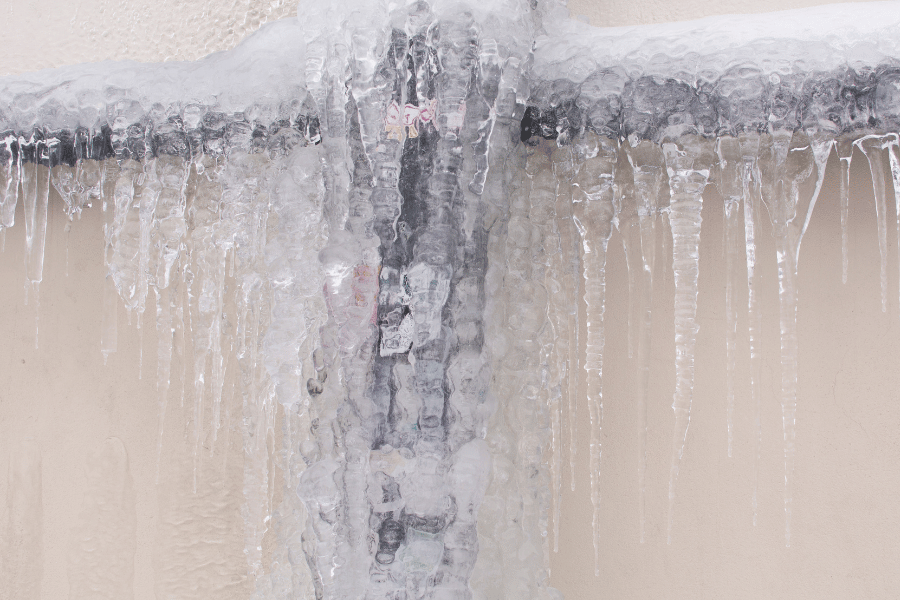
Frozen pipes are the most common winter loss claim for many people. Many sudden and accidental damages can be covered by insurance, but it is important to be aware and prepare for any emergencies ahead of time.
Spaces that are unheated, even indoor spaces like your garage, basement, or attic, are most at risk of having frozen pipes. Pipe insulation can help any exposed pipes or vulnerable areas in the house. Other ways to protect them from freezing include keeping doors closed and not letting the house get too cold.
10. Check Drainage
Making sure the soil around your foundation hasn't settled that creates areas for water to pool is essential. If you see a low spot in the area, simply fill it with some soil. Going around your home to check any gutters or small spots is a simple task that will help prevent any real problems in the winter months.
Having correct drainage helps keep the home from not damaging, freezing, and creating problems to the foundation and house itself in the future. Before any winter storm, a simple way of going around the whole house and checking anything that could lead to damage is essential.
11. Prepare For Power Outage
If a winter storm is impending, prepare for the possibility of power lines being knocked out for several days. Crafting early before any winter storm is essential if a blackout happens. Here are some ways to prepare for a power outage to be ready for anything in the winter months.
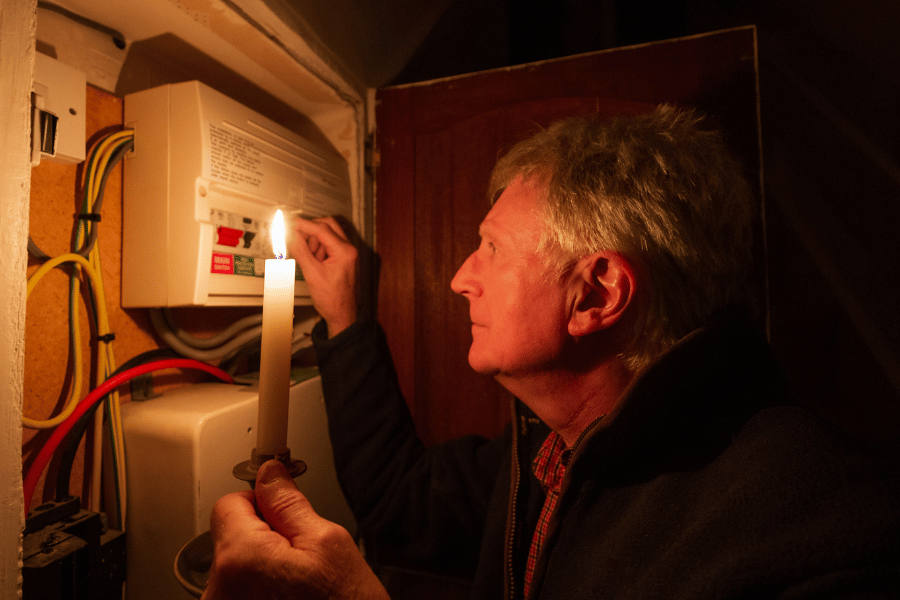
- Fill up on canned goods that do not require heating because you will have no electricity
- Install fresh batteries in any flashlights or radios that you will need.
- Keep spare batteries on hand for any devices ready to use
- Keep a portable cooler in the garage to store any frozen foods to prevent them from spoiling
- Plug-in electronic things into surge protectors to keep damages away from computers, TVs, and other things plugged into wall outlets
- Back up any data on computers if you are using them
- Keep car tank fuel at least halfway because you will not be able to use any gas pumps in a power outage
- Stock up on candles and matches to have light throughout the house.
- If you have a fireplace, stock up on several days worth of firewood to keep the house warm
- Keep many household entertainment in the house, such as games, books, paper, magazines, and other things
- Keep on hand many warm clothes and blankets because it can get freezing in the house with no heat
- If you have a generator, make sure you use it wisely and correctly and do not use it any closer than 20 feet from the home.
FAQS
How do you prep your house for snow?
There are many things to do to prepare your home for snow. Some of the most important is protecting your pipes, insulating any areas, services furnaces, repairing any loose holes, and turning off any facts to prevent any damage.
How do I prepare my house for freezing temperatures?
Keeping the cold air out, tightly close doors and windows well, and repair any broken or drafty windows, doors, and walls. You may also have to fix any leaks in the crawl spaces and basements as well as winterize unheated areas to keep out the cold.
Do you think you should shovel the snow around your house?
Shoveling snow away from home is important and can reduce the risk of flooding. Your gutters should be clear and angles to direct meltwater away from the house as well as any slopes in your foundation.
What is the coldest you should let your house get in the winter?
The World Health Organization (WHO) recommends indoor temperatures of at least 64 degrees Fahrenheit, and you can drop it to at least 62 at night if you are looking to save your energy bill.
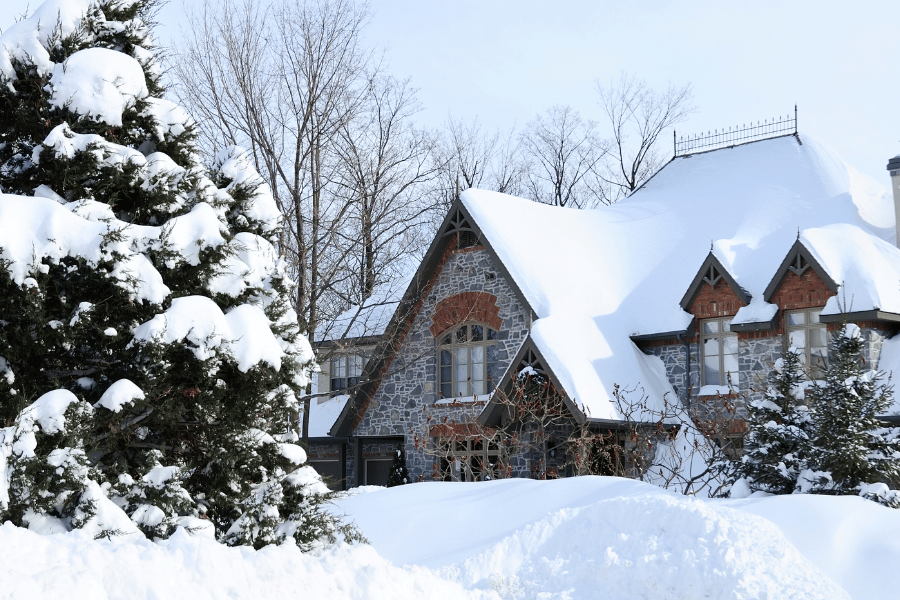
Preparing Your Home For Impending Snow
Living in an area that is prone to snow and winter storms can be challenging. Knowing how to prepare your home for the upcoming winter season is essential. If you are planning to buy a new house in an area with snow, it is essential to plan ahead and ensure that your new home is equipped with everything you will need to stay warm and safe during the winter months.
As the winter season approaches, it's time to prepare your home for the cold weather and the possibility of snow. Preparing your home in advance can help you save on utility bills, safeguard your investments, and increase the value of your property, and the best part is that you can do it yourself.
If you are considering moving, contact us or visit our website. Our team at Raleigh Realty is here to help you with any home buying or selling needs.

Ryan Fitzgerald
Hi there! Nice to 'meet' you and thanks for visiting our Raleigh Real Estate Blog! My name is Ryan Fitzgerald, and I'm a REALTOR® in Raleigh-Durham, NC, the owner of Raleigh Realty. I work alongside some of the best Realtors in Raleigh. You can find more of my real estate content on Forbes, Wall Street Journal, U.S. News and more. Realtor Magazine named me a top 30 under 30 Realtor in the country (it was a long time ago haha). Any way, that's enough about me. I'd love to learn more about you if you'd like to connect with me on Facebook and Instagram or connect with our team at Raleigh Realty. Looking forward to connecting!
Related Blogs
